Dolphins belong to the Delphinidae family within the Cetacea order, which also includes whales. Dolphins are one of the most lovely ocean species around the world. They are loved by many and recognized by many. They are found all over the world.
Dolphins are known for their intelligence, fluffy bodies, beautiful colors, and social behaviors. Dolphins are often referred to as aquatic friends due to their friendly nature towards humans.
But it will be astonishing to tell you that new research published in 2024 has confirmed that around 49 types of dolphins live in different areas of the world. From common dolphins to bottlenose dolphins, the diversity among species is vast
Each dolphin species has distinct characteristics, including lifespan, size, and behavior. Here, we will explore all forty-nine types of dolphins and their facts. We will also explore a few endangered species; some have few concerns, and others are out of concern.
Let’s dive into a detailed exploration of dolphins and their types.
Different Breeds of Dolphins
According to research, in January 2024, there were 49 dolphins in total. However, these enormous types are further divided into three breeds: common dolphins, bottlenose dolphins, and Atlantic dolphins.
These mammals are known for their rubbery and smooth skin. Different species are characterized based on their appearance, the area where dolphins live, behavior, body shape, size, etc. Here are the most common types of dolphin fish. These include:
Common Dolphin
The common dolphin breed includes short-beaked and long-beaked dolphins. These fish can grow up to 8 feet in length, while the average length is around 6 feet. Common dolphins eat small fish and live up to 20 years.
As the name suggests, these fish are known by their beaks. The short-beaked male weighs around 550 pounds, whereas the long-beaked male weighs around 500 pounds. They have black bodies with white abdomens.
These are spotted worldwide, including in East Atlantic and West Atlantic waters, as well as Pacific and Australian waters. Long-beaked dolphins live in shallow water, whereas short-beaked dolphins live as deep as 600 feet.
Bottlenose Dolphins
If you have ever been to a dolphin show, you must have seen bottlenose dolphins. These are the most recognizable dolphins all over the world due to their intelligence, charisma, and ability to follow complex tasks.
They have bottle-type noses that grow up to 3 inches. Their bodies are gray with white stomachs. Typically, coastal bottlenose dolphins grow up to 9 feet, and offshore bottlenecks grow larger, up to 12 feet.
They are found all over the world. Bottlenose dolphins’ average lifespan is 20 to 25 years. However, in rare cases, 1% of bottleneck fish live up to 60 years.
Atlantic Spotted Dolphins
Atlantic spotted dolphins are found in one location: the Atlantic Ocean. They have spotted bodies, and their spots grow with age and become darker. These fish live in pods and swim really fast.
These dolphins can be identified with white-tipped beaks, curved flippers, and dark gray patterns on the back. Atlantic spotted fish grow up to 7.5 feet and weigh around 300 pounds. Their lifespan is between 30 to 40 years.
Now it is time to learn about different dolphin types living in two of the biggest oceans, i.e., the Atlantic and Pacific oceans.
Atlantic Ocean Dolphin Species
There are enormous dolphin species found in the Atlantic Ocean. These species include:
- Atlantic Bottlenose Dolphin: Bottlenose dolphins belong to the Atlantic Ocean dolphin. They are found in polar regions of the Atlantic Ocean.
- Atlantic Spotted Dolphin: Atlantic spotted dolphins are spotted in western Atlantic Ocean regions between New Jersey and Panama.
- Atlantic White-sided Dolphin: White-sided dolphins purely belong to the Atlantic Ocean. They can be found in Greenland and Cape Cod in the North Atlantic waters.
- Common Dolphin: Both species of common dolphins, short-beaked and long-beaked, belong to the Atlantic Ocean’s northern and southern parts.
Pacific Ocean Dolphin Species
Most people think there are no dolphins in the Pacific. However, there are a few dolphin species living in the Pacific Ocean. These are:
- Pacific White-Sided Dolphin: White-sided dolphins belong to the Pacific Ocean, too. These are found in the North Pacific Ocean in Japan, North America, Alaska, and Mexico.
- Pacific Bottlenose Dolphins: Bottlenose dolphins are found in low numbers in the Pacific oceans, from Japan to Australia, and the southern regions from Cali to Chile.
- Spinner Dolphins: Spinner dolphins like warm waters. They are found in warm waters of the Pacific Ocean, including Central American regions and Thailand.
- Chinese White Dolphin: Chinese white Dolphins thrive in Pacific regions. These are in Southeast Asia, the Indonesian Islands, and northern Australia.
- Hector’s Dolphin: These dolphins are found only in the Pacific Ocean in New Zealand.
Top 49 types of dolphins With facts
Let us dive into the most common and rare 49 dolphin types.
1. Atlantic Humpback Dolphin

The Atlantic humpback dolphin, part of the Sousa group, is recognized by its distinctive humped back. It has gray skin and fewer teeth compared to similar dolphins.
It is native to the Eastern Atlantic and swims near the African coast from Western Sahara to Angola.
These dolphins group together in small pods but are facing critical endangerment due to factors like losing their homes, unintentional capture, and other dangers.
Scientific Name: Sousa teuszii
Family: Delphinidae
Length: 2.5-2.8 meters (8.2-9.2 feet)
Weight: 150-200 kg (330-440 lbs)
Lifespan: Up to 40 years
Where found: Eastern tropical Atlantic Ocean, along the coasts of West Africa
Conservation status: Critically Endangered
2. Atlantic Spotted Dolphin
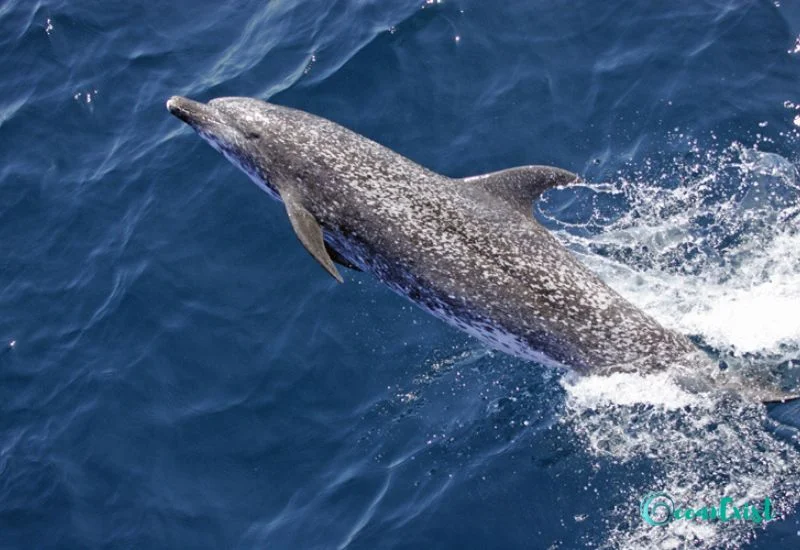
Atlantic Spotted dolphins have spots on their bodies, as the name suggests. These spots grow darker as they age. They have slender bodies with gray coloration on the top side and light and white on the abdomen.
These dolphins are very social. They are always spotted in groups of up to 15 or more. People also associate them with other dolphins, such as bottlenose dolphins.
Scientific Name: Stenella frontalis
Family: Delphinidae
Length: 1.7-2.3 meters (5.6-7.5 feet)
Weight: 100-140 kg (220-310 lbs)
Lifespan: Around 45 years
Where found: Atlantic Ocean, particularly in tropical and warm temperate waters
Conservation status: Least Concern
3. Atlantic White-Sided Dolphin
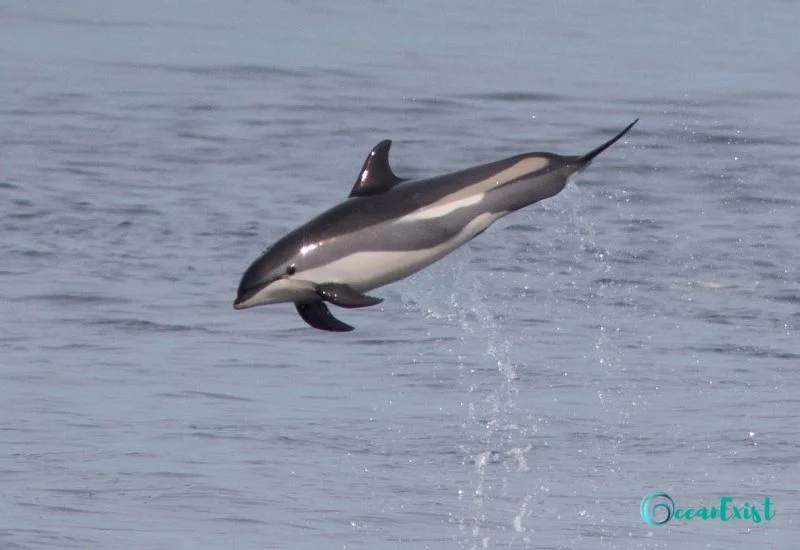
Who doesn’t know about these athletic dolphins with acrobatic properties? The Atlantic White-Sided dolphins are found in the North Atlantic Ocean.
These have distinct body types. On the above side, their colors are gray; on bellies, the lighter colors, and on the dorsal fins, the yellow coloration is prominent.
These fish grow up to 2.8 meters and weigh around 450 lbs. Their lifespan is up to 27 years. We watch these fish at Dolphin Shoes due to their acrobatic properties.
Scientific Name: Lagenorhynchus acutus
Family: Delphinidae
Length: 2.5-2.8 meters (8.2-9.2 feet)
Weight: 180-230 kg (400-490 lbs)
Lifespan: Up to 27 years
Where found: North Atlantic Ocean
Conservation status: Least Concern
4. Australian Humpback Dolphin
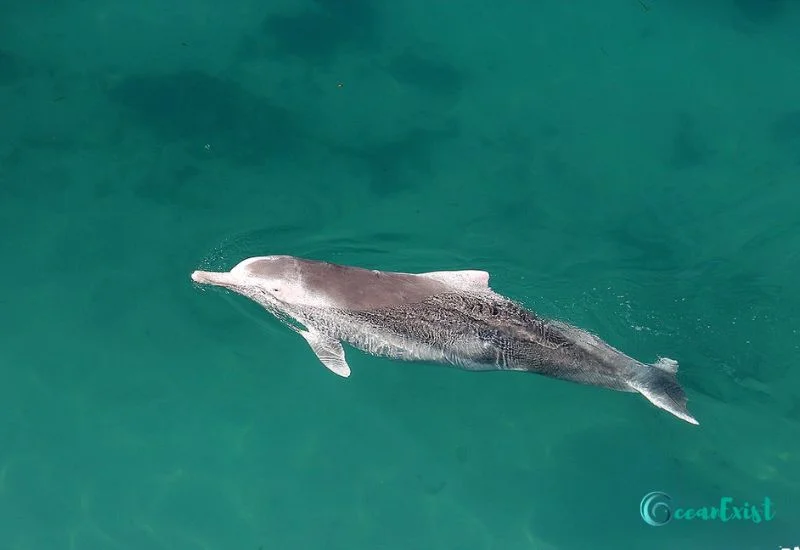
Australian humpback dolphins were made distinct and different species than normal humpback dolphins in 2014.
These dolphins have humps on the back, which is why they are named humpback dolphins. This Dolphin is light gray in color and light in color on the abdomen side.
The Australian humpback dolphin grows up to 3.1 meters and weighs around 570 lbs. Its lifespan is around 40 years. The Dolphin is endemic to northern Australia and New Guinea.
Scientific Name: Sousa sahulensis
Family: Delphinidae
Length: 2-3.1 meters (6.6-9.2 feet)
Weight: 150-200 kg (440-570 lbs)
Lifespan: Up to 40 years
Where found: Northern Australia and southern New Guinea
Conservation status: Vulnerable
5. Australian Snubfin Dolphin

In 2005, the Australian Snubfin Dolphin, which is found in northern Australia and southern New Guinea, was identified as a separate species after previously being grouped with the similar Irrawaddy dolphin.
This Dolphin is named the snubfin because of its short, blunt dorsal fin. This species has a distinctive three-color pattern, setting it apart from the Irrawaddy dolphin, which has only two colors.
Australian Snubfin Dolphin grows up to 9 feet and lives for 30 years. This 300 lb dolphin eats small fish.
Scientific Name: Orcaella heinsohni
Family: Delphinidae
Length: 2-2.7 meters (6.6-8.9 feet)
Weight: 100-130 kg (220-290 lbs)
Lifespan: Up to 30 years
Where found: Northern Australia and southern New Guinea coastal waters
Conservation status: Vulnerable
6. Chilean Dolphin
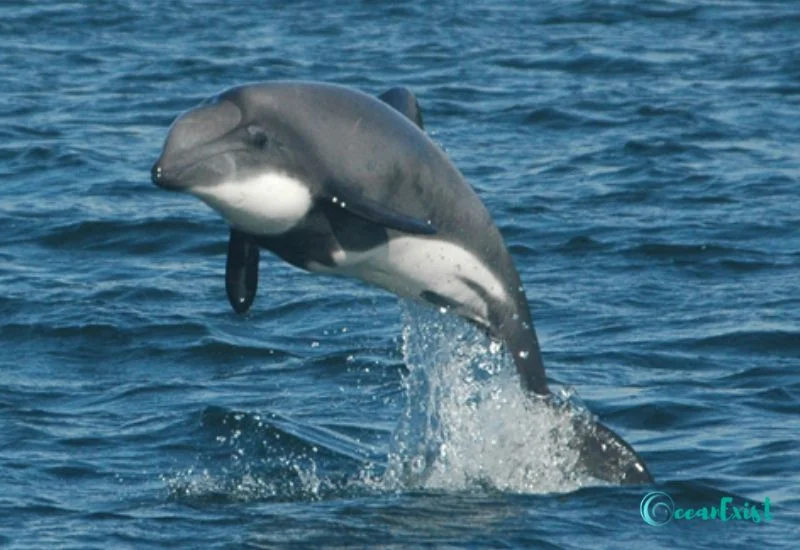
The Chilean Dolphin, also known as the Black Dolphin, is strong and robust. It has a rounded head and no beak. This Dolphin is dark gray to black with a white underside.
The Chilean Dolphin is a small crustacean species sometimes mistaken for a porpoise. Its colors are dark gray to black with a white belly side.
Chilean dolphins are anti-social and considered shy. However, they also thrive in groups of 10 or more.
Scientific Name: Cephalorhynchus Eutropia
Family: Delphinidae
Length: 1.7 meters (5.6 feet)
Weight: 60-70 kg (130-150 lbs)
Lifespan: Up to 20 years
Where found: Coastal waters of Chile
Conservation status: Near Threatened
7. Clymene Dolphin
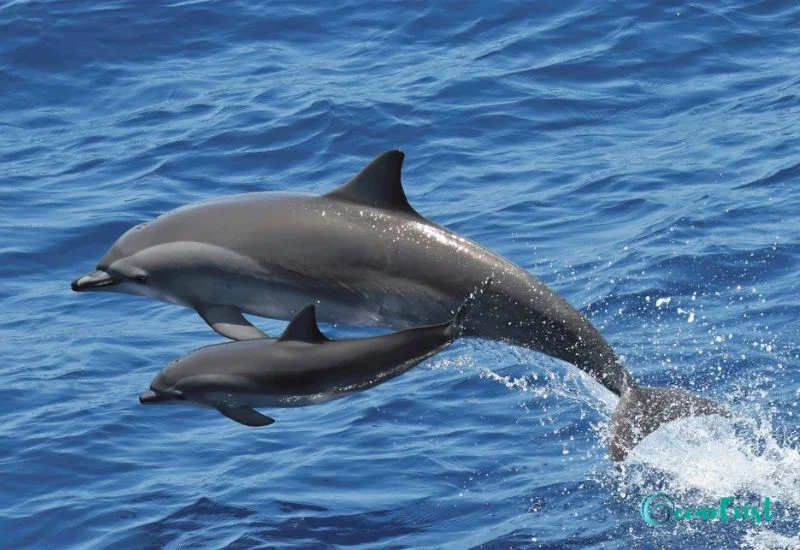
The Clymene Dolphin, also known as the brief-snouted spinner dolphin, has a sleek body with three prominent color patterns: dusk gray flanks and back, lighter grey in the throat and flanks, and white on the belly.
The Clymene dolphin descends from a mixture of the spinner and striped Dolphin. That is why it has features from both parent species.
This is the only Dolphin that’s the result of mixed breeding. Clyemen grow up to 2 meters and weigh only 187 lbs maximum.
Scientific Name: Stenella clymene
Family: Delphinidae
Length: 1.8-2 meters (5.9-6.6 feet)
Weight: 75-85 kg (165-187 lbs)
Lifespan: Up to 35 years
Where found: Atlantic Ocean, particularly in tropical and subtropical regions
Conversation Status: Least Concerns
8. Commerson’s Dolphin
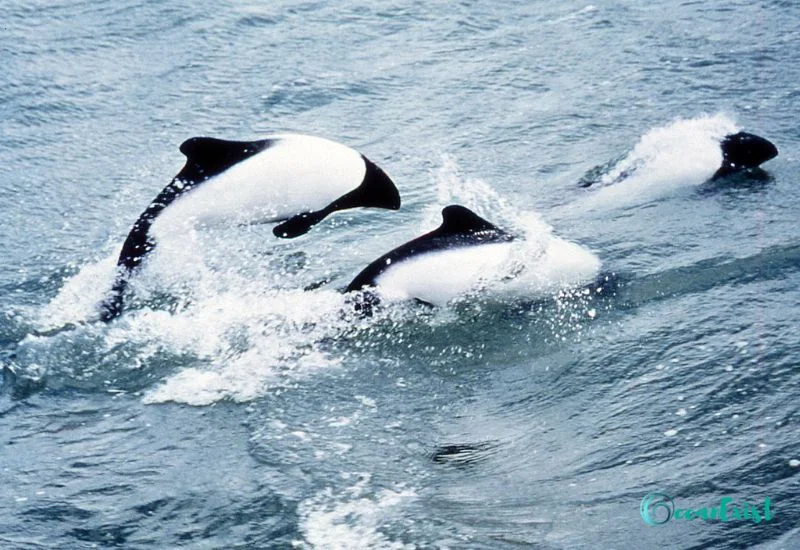
Commerson’s Dolphin, named after French naturalist Philbert Commersons, is one of the smallest species. They are round with round dorsal fins. This Dolphin is known for its striking hues of black and white patterns.
It is an energetic dolphin with acrobatic attributes. It grows to a maximum of 5 feet and weighs only 143 pounds, making it one of the smallest dolphins.
Commerson’s Dolphin diet includes fish and squid. It can be found in the southern part of South America.
Scientific Name: Cephalorhynchus commersonii
Family: Delphinidae
Length: 1.5 meters (4.9 feet)
Weight: 35-65 kg (77-143 lbs)
Lifespan: Up to 18 years
Where found: Coastal waters off southern South America and around the Kerguelen Islands
Status: Least concerns
9. Common Bottlenose Dolphin

The Common Bottlenose Dolphin, scientifically known as Tursiops Truncatus, is one of the acrobatic dolphins commonly seen at dolphin shows.
This Dolphin is named because of its bottle-type nose. It is a social dolphin that grows up to 13 feet and weighs around 1430 lbs.
They are gray on the upper side and light in color on the lower sides. Their favorite diet is squid and other small fish.
Scientific Name: Tursiops truncatus
Family: Delphinidae
Length: 2-4 meters (6.6-13 feet)
Weight: 150-650 kg (330-1430 lbs)
Lifespan: Up to 50 years
Where found: Worldwide in temperate and tropical oceans
Status: Least Concern
10. Common Dolphin

As the name suggests, the common Dolphin is among the most common dolphin species. Its population grows above a few million.
This Dolphin is social and playful. Due to its agility, this dolphin fish is sometimes called the watcher of marine wildlife.
It is a mid-size dolphin with a length of 8 feet. Common dolphin average lifespan is around 35 years and weighs around 235 kg.
Scientific Name: Delphinus delphis
Family: Delphinidae
Length: 2-2.5 meters (6.6-8.2 feet)
Weight: 80-235 kg (176-498 lbs)
Lifespan: Up to 35 years
Status: Least Concern
11. Dusky Dolphin
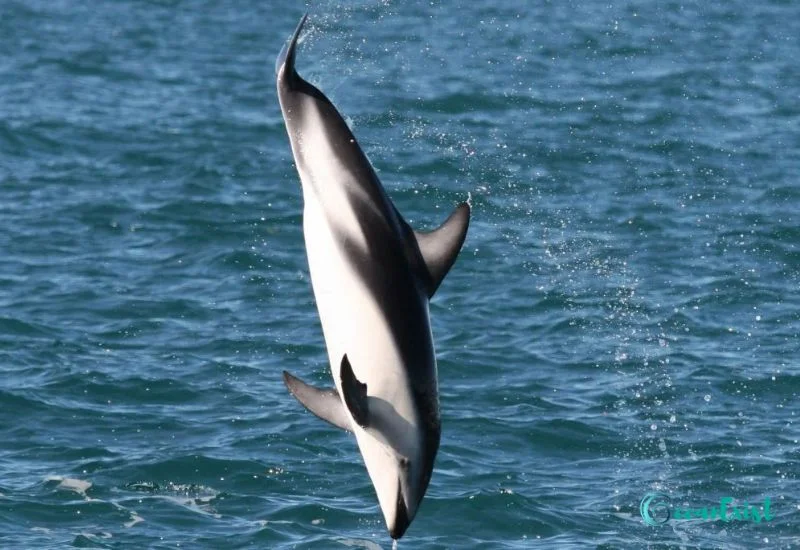
The Dusky Dolphin is known for its striking color pattern and acrobatic displays. These dolphins are distinguished by their dark gray or black backs, lighter gray flanks, and white bellies.
Dusky Dolphins are social creatures, often found in groups ranging from a few individuals to over a thousand. They are highly active and known for their energetic leaps and spins.
These dolphins feed on small fish and squid. They are often seen hunting cooperatively. This small Dolphin grows up to 2 meters and weighs only around 220 pounds.
Scientific Name: Lagenorhynchus obscurus
Family: Delphinidae
Length: 1.8-2 meters (5.9-6.6 feet)
Weight: 70-100 kg (154-220 lbs)
Lifespan: Up to 30 years
Where found: Coastal waters of the Southern Hemisphere, New Zealand, and South America
Conservation Status: Least Concern
12. False Killer Whale

Despite its name, the False Killer Whale shares more characteristics with dolphins than whales. It has a slender, black body and a distinctive rounded head.
These highly social dolphins form strong bonds within their pods. They live with a few dozen to hundreds of individuals.
They are known for their cooperative hunting strategies and vocal communication. False Killer Whales feed on various prey, including fish and squid, and occasionally hunt other marine mammals.
Scientific Name: Pseudorca crassidens
Family: Delphinidae
Length: 5-6 meters (16-20 feet)
Weight: 1,200-2,200 kg (2,645-4,850 lbs)
Lifespan: Up to 60 years
Where found: Tropical and temperate oceans worldwide
Status: Near Threatened
13. Fraser’s Dolphin
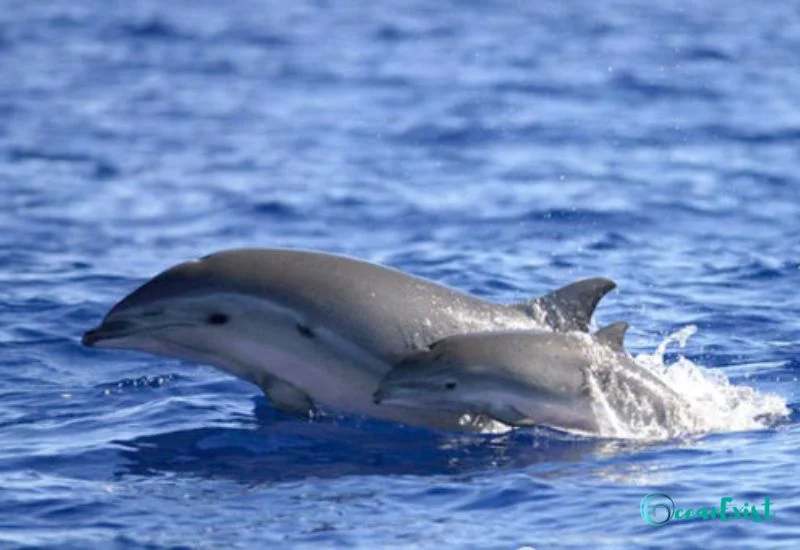
Fraser’s Dolphin is a relatively small dolphin with a robust body, a short beak, and striking coloration, including a dark stripe running from its face to its tail.
These dolphins are found in deep, tropical, subtropical waters, often in large, fast-moving groups. They are known for their energetic behavior and high-speed swimming.
Fraser’s Dolphins feed mainly on fish and squid, typically hunting in deep waters. Scientifically known as Lagenodelphis hosei, this Dolphin grows up to 2.7 meters and weighs around 440 pounds.
Scientific Name: Lagenodelphis hosei
Family: Delphinidae
Length: 2.7 meters (8.9 feet)
Weight: 200 kg (440 lbs)
Lifespan: Up to 25 years
Where found: Deep waters of tropical and subtropical oceans
Conservation Status: Least concern
14. Guiana Dolphin
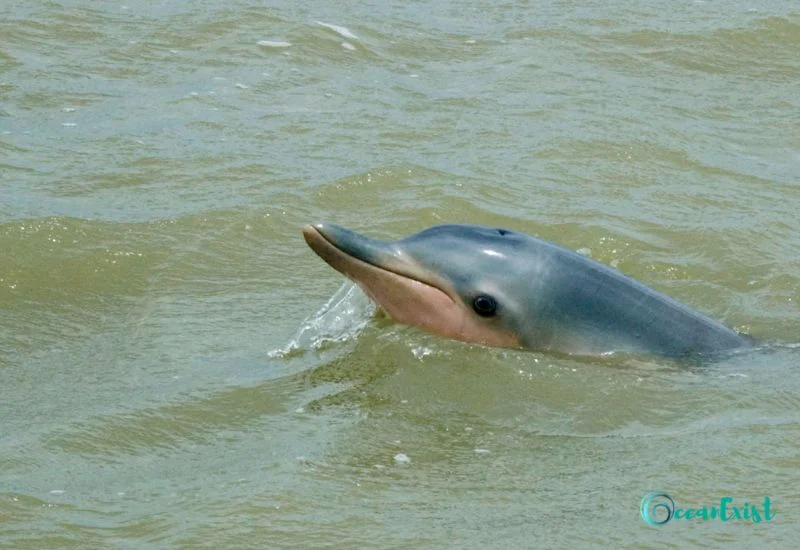
The Guiana Dolphin, also known as the Costero, is a small, gray dolphin with a distinctly curved dorsal fin. It is commonly found in coastal and estuarine waters of South America.
Guiana Dolphins are social and often seen in small groups. They are known for their playful behavior and can sometimes be seen riding the waves created by boats.
Their diet consists mainly of fish and crustaceans, which they hunt in shallow waters. These grow up to 2 meters in size and weigh around 265 pounds.
Scientific Name: Sotalia guianensis
Family: Delphinidae
Length: 2-2.2 meters (6.6-7.2 feet)
Weight: 50-120 kg (110-265 lbs)
Lifespan: Up to 30 years
Where found: Coastal and riverine waters of South America
Conservation Status: Near threatened
15. Heaviside’s Dolphin
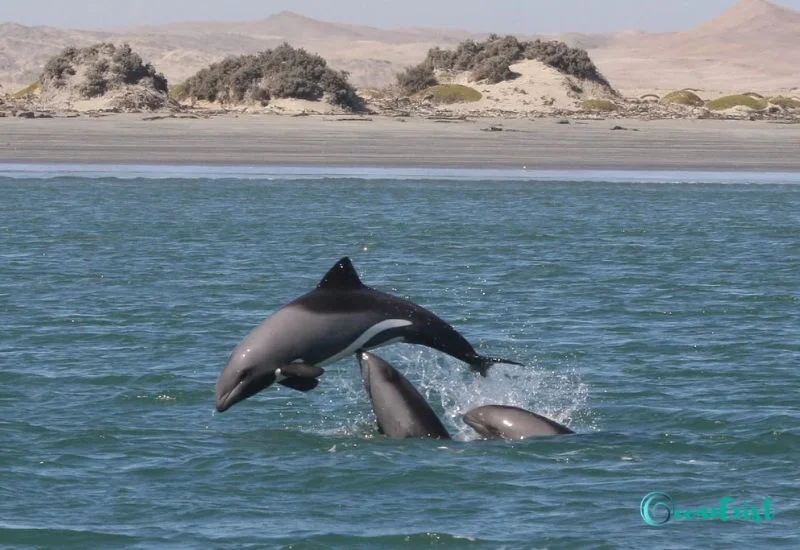
Heaviside’s Dolphin, also known as the Heaviside Dolphin, is a small, robust dolphin with a distinctive three-color pattern: dark gray or black back, white underside, and a gray band along the sides.
These dolphins are found off the southwest coast of Africa and are known for their playful behavior, including leaping and spinning out of the water.
They are smaller than other dolphins and grow only up to 6 feet. Heaviside’s Dolphins, which weigh around 150 pounds, primarily feed on fish and squid and often hunt in small groups.
Scientific Name: Cephalorhynchus Heaviside
Family: Delphinidae
Length: 1.8 meters (5.9 feet)
Weight: 60-70 kg (130-150 lbs)
Lifespan: Up to 20 years
Where found: Coastal waters off southwest Africa
Conservation Status: Least concern
16. Hector’s Dolphin
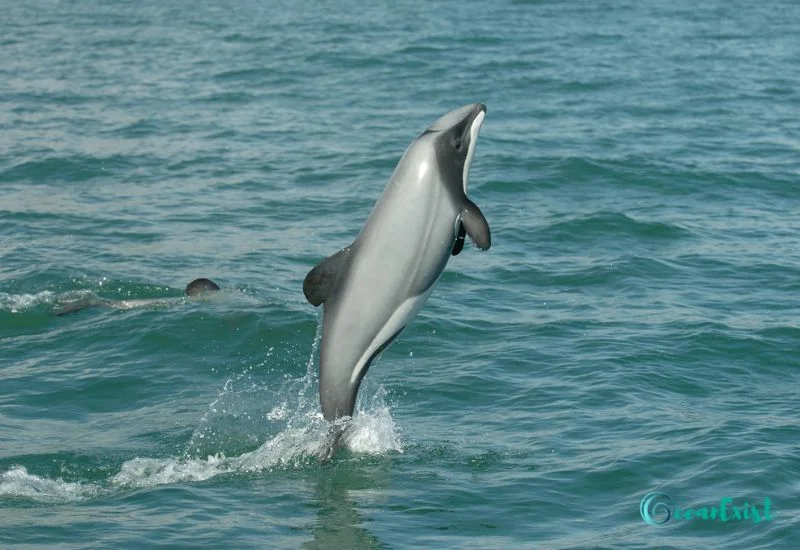
Hector’s Dolphin is one of the smallest and rarest dolphin species. It has a distinctive rounded dorsal fin and a short, stocky body with a unique gray, black, and white color pattern.
Endemic to the coastal waters of New Zealand, Hector’s Dolphins are social animals often found in small groups. They are known for their playful nature and acrobatic abilities.
Their diet consists primarily of fish and squid, which they catch in shallow waters. Hector’s Dolphin is one of the smallest dolphins, growing up to 1.4 meters only. Benign with its small size, this Dolphin weighs only around 60 kg.
Scientific Name: Cephalorhynchus hectori
Family: Delphinidae
Length: 1.2-1.4 meters (3.9-4.6 feet)
Weight: 40-60 kg (88-132 lbs)
Lifespan: Up to 22 years
Where found: Coastal waters around New Zealand
Conservation status: Highly Endangered
17. Hourglass Dolphin
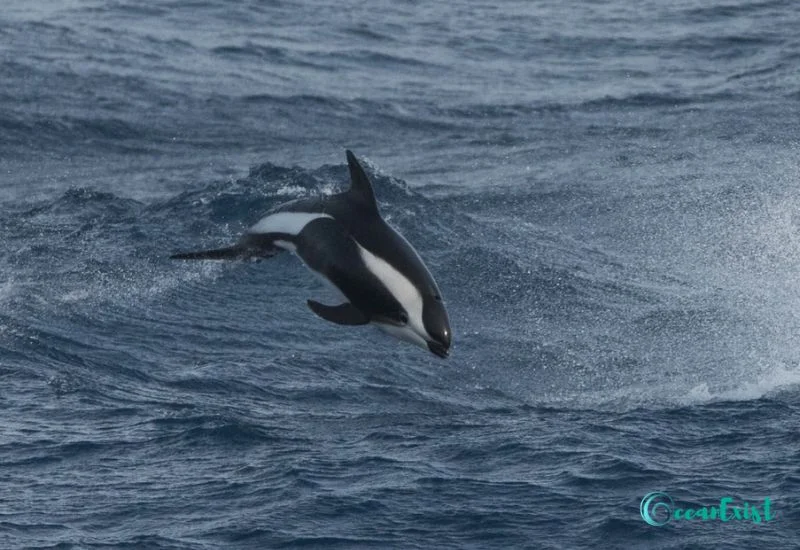
The Hourglass Dolphin has a distinctive black-and-white hourglass-shaped pattern on its sides. This striking Dolphin is one of the few species in the cold waters of the Antarctic and sub-Antarctic regions.
Hourglass Dolphins are social and often seen in groups, sometimes associating with other cetacean species. They are known for their energetic behavior, including bow-riding and leaping.
Hourglass dolphins live up to 25 years, grow up to 6 feet, and weigh around 265 pounds. Their diet consists mainly of fish and squid.
Scientific Name: Lagenorhynchus cruciger
Family: Delphinidae
Length: 1.8 meters (5.9 feet)
Weight: 90-120 kg (198-265 lbs)
Lifespan: Unknown, estimated up to 25 years
Where found: Antarctic and sub-Antarctic waters
Conservation Status: Least Concern
18. Indian Ocean Humpback Dolphin

The Indian Ocean Humpback Dolphin is easily identified by its humped back and long, slender beak. It has a dark gray to pinkish coloration with a lighter underside.
These dolphins are often found in small groups along the coastal waters of the Indian Ocean. They are known for their shy behavior, often avoiding boats.
This dolphin type grows up to 3 meters and weighs around 440 pounds, making them average-looking dolphins. Their diet primarily includes fish and crustaceans. They hunt in shallow waters.
Scientific Name: Sousa plumber
Family: Delphinidae
Length: 2-2.8 meters (6.6-9.2 feet)
Weight: 150-200 kg (330-440 lbs)
Lifespan: Up to 40 years
Where found: Coastal waters of the Indian Ocean
Conversation status: Endangered
19. Indo-Pacific Bottlenose Dolphin

The Indo-Pacific Bottlenose Dolphin, known for its robust body and elongated beak, is similar in appearance to the common bottlenose dolphin but has distinct differences in coloration and size.
These dolphins are highly social and intelligent, often seen in large pods. They display a variety of behaviors, including cooperative hunting and playing.
Their diet consists mainly of fish and squid. Their hunt is full of echolocation techniques.
Scientific Name: Tursiops aduncus
Family: Delphinidae
Length: 2.6 meters (8.5 feet)
Weight: 230 kg (507 lbs)
Lifespan: Up to 40 years
Where found: Coastal waters of the Indian and western Pacific Oceans
Conservation status: Near Threatened
20. Indo-Pacific Humpback Dolphin
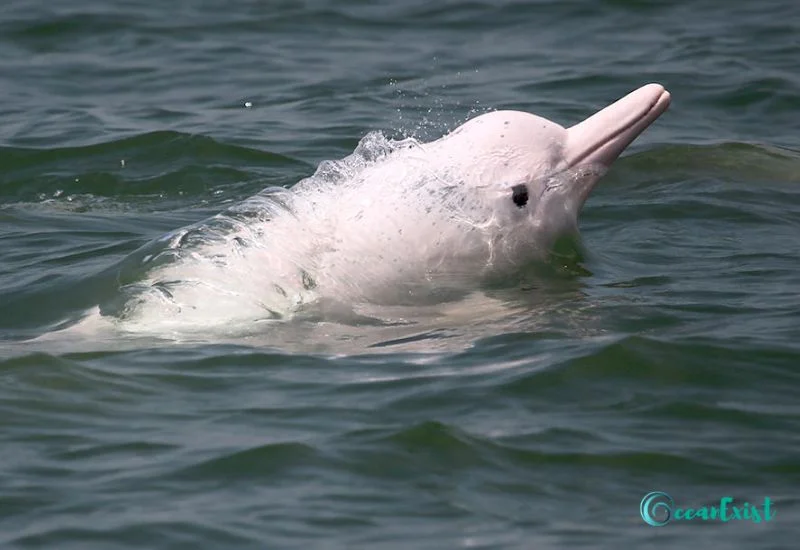
The Indo-Pacific Humpback Dolphin is known for its distinctive humped back and long, slender beak. It has a unique coloration that ranges from grey to pink.
These dolphins are found in the coastal waters of Southeast Asia. They have a shy and elusive nature. They are often seen alone or in small groups.
Their diet primarily consists of fish and cephalopods. These grow up to 10 feet and weigh around 500 pounds.
Scientific Name: Sousa chinensis
Family: Delphinidae
Length: 2-3.2 meters (6.6-10.5 feet)
Weight: 150-230 kg (330-507 lbs)
Lifespan: Up to 40 years
Where found: Coastal waters of Southeast Asia
Conversational Status: Vulnerable
21. Irrawaddy Dolphin

The Irrawaddy Dolphin is known for its distinctive rounded forehead and lack of a prominent beak. It has a gray body with a lighter underside.
These dolphins are found in both coastal and freshwater environments in Southeast Asia. They are known for their shy behavior and often surface in a rolling motion.
Their diet consists mainly of fish and crustaceans, which they hunt using echolocation. Irrawaddy Dolphin grows up to 2.3 meters and weighs around 287 pounds.
Scientific Name: Orcaella brevirostris
Family: Delphinidae
Length: 2.3 meters (7.5 feet)
Weight: 130 kg (287 lbs)
Lifespan: Up to 30 years
Where found: Coastal and freshwater rivers of Southeast Asia
Conservation Status: Vulnerable
22. Killer Whale (Orca)
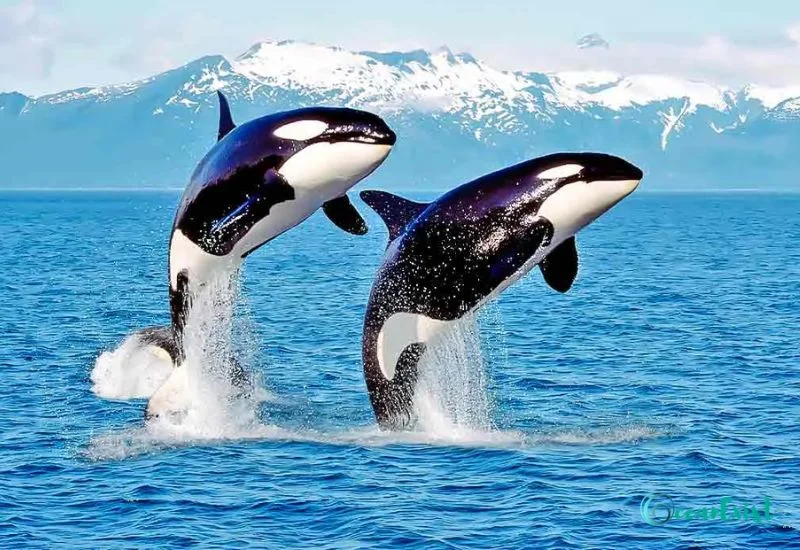
The Killer Whale, or Orca, is the largest member of the dolphin family. It has a distinctive black-and-white coloration and a robust, powerful body.
Orcas are found in all the world’s oceans and are known for their complex social structures and diverse diets, which include fish, seals, and even whales. They are highly intelligent and display a variety of sophisticated hunting techniques.
Killer whales are apex predators, killing even bigger whales, squids, and seahorses in groups. Orcas live in matriarchal pods and are known for their strong family bonds and vocal communication.
Scientific Name: Orcinus orca
Family: Delphinidae
Length: 5-9 meters (16-29.5 feet)
Weight: 3,600-5,400 kg (7,937-11,905 lbs)
Lifespan: Up to 90 years
Where found: Worldwide, all oceans
Conservation: No issue
23. Long-Finned Pilot Whale
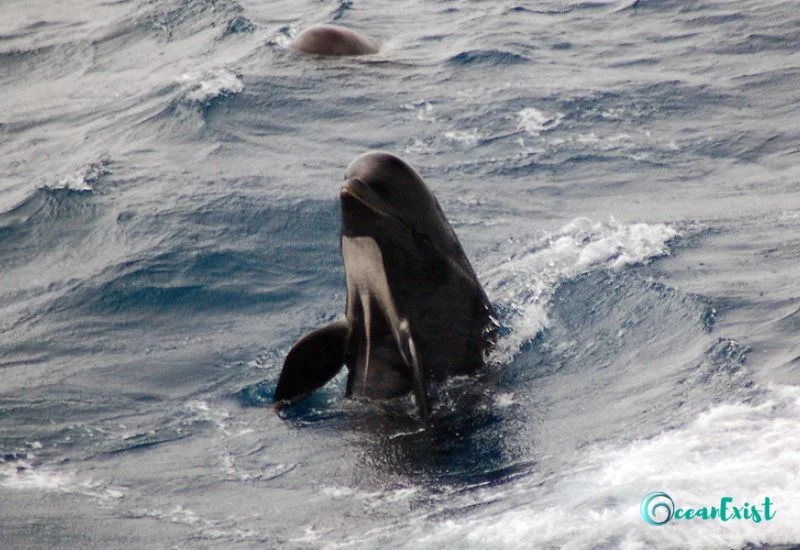
The Long-Finned Pilot Whale is a large dolphin species known for its long, slender pectoral fins and robust body. It has a dark gray-to-black coloration with a lighter patch on the throat.
These dolphins are highly social and often found in large pods. They are known for their deep diving abilities and are often seen in temperate waters.
Their diet primarily includes squid and fish, which they hunt in deep waters. They are large and grow up to 7 feets and weigh around 6500 pounds.
Scientific Name: Globicephala melas
Family: Delphinidae
Length: 5-7 meters (16-24 feet)
Weight: 1,000-3,000 kg (2,205-6,614 lbs)
Lifespan: Up to 60 years
Where found: North Atlantic and Southern Hemisphere waters
Conservation Status: Least Concern
24. La Plata Dolphin
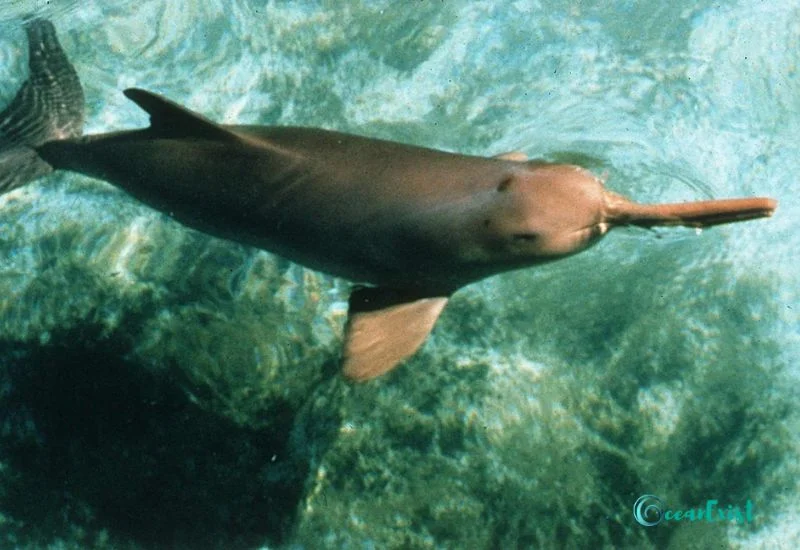
La Plata Dolphin, often referred to as the Franciscana, this small dolphin is found in coastal Atlantic waters of southeastern South America. It is notable for its long, slender snout.
The La Plata Dolphin, often referred to as the Franciscana, is a small dolphin found in coastal Atlantic waters of southeastern South America. It is notable for its long, slender snout.
This dolphin belongs to
Scientific Name: Pontoporia blainvillei
Family: Pontoporiidae
Life span 20 years
Weight 50
Length 1.6 – 1.81
Where Found: South America
Conservation Status: Least
25. Pantoporia
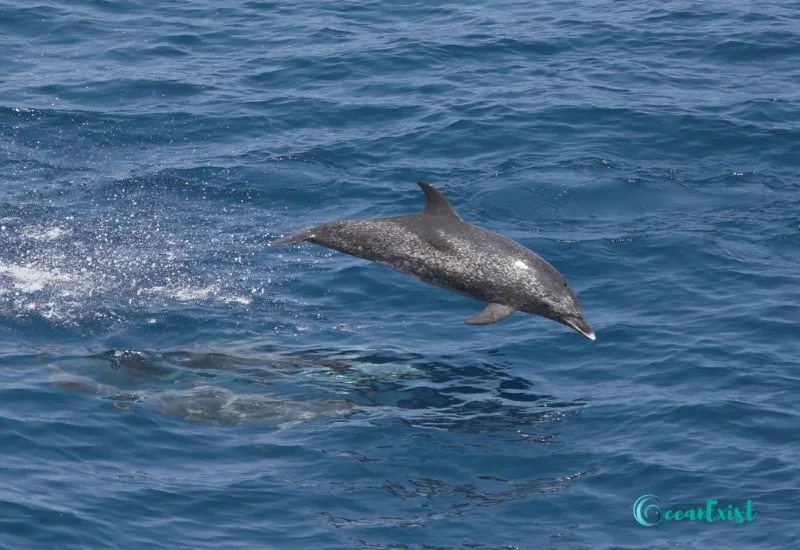
The Pantropical Spotted Dolphin is a species of dolphin found in tropical and warm temperate waters worldwide, often in association with offshore banks and islands. It is known for its distinctive spots and highly social behavior.
Scientific Name: Stenella attenuata
Family: Delphinidae
Length: 1.6 to 2.5 meters (5.2 to 8.2 feet)
Weight: 100 to 140 kilograms (220 to 310 pounds)
Lifespan: Around 40 to 50 years
Where found: Tropical and warm temperate waters worldwide, often in association with offshore banks and islands.
Conservation: Least Concern
26. Indus River Dolphin

The Indus River Dolphin is a freshwater dolphin found in the Indus River in Pakistan and the Beas River in India. It is characterized by its long, pointed snout and robust body.
Scientific Name: Platanista gangetica minor
Family: Platanistidae
Length: Typically 1.5 to 2.5 meters (4.9 to 8.2 feet)
Weight: 70 to 110 kilograms (150 to 240 pounds)
Lifespan: Estimated to be around 20 to 30 years
Where found: The Indus River dolphin is found only in the Indus River in Pakistan and the Beas River in India.
Conservation: Listed as Endangered
27. Baiji (Chinese River Dolphin)
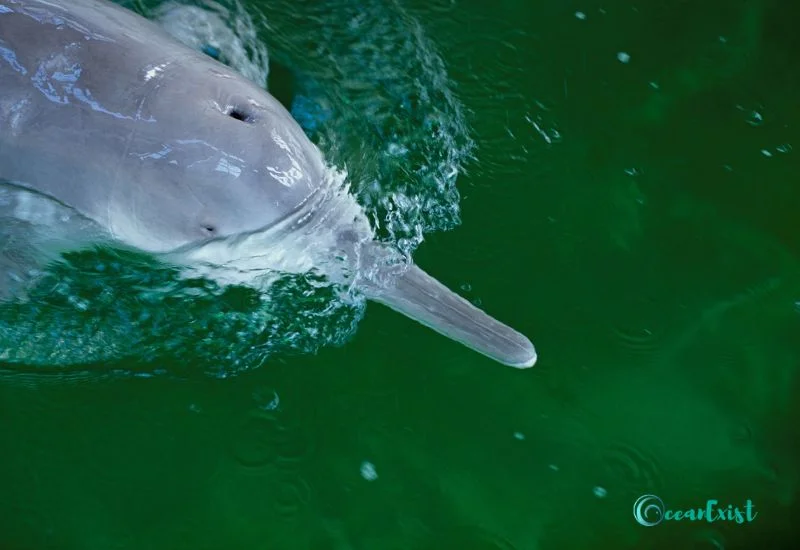
The Baiji, also known as the Chinese River Dolphin, was historically found in the Yangtze River in China. However, it has been declared functionally extinct due to habitat degradation and pollution.
Scientific Name: Lipotes vexillifer
Family: Lipotidae (formerly considered a member of the Platanistidae family)
Length: 1.5 to 2.5 meters (4.9 to 8.2 feet)
Weight: 135 to 230 kilograms (298 to 507 pounds)
Lifespan: Around 24 years
Where found: Historically, it was found in the Yangtze River in China.
Conservation: Declared functionally extinct
28. Sotalia
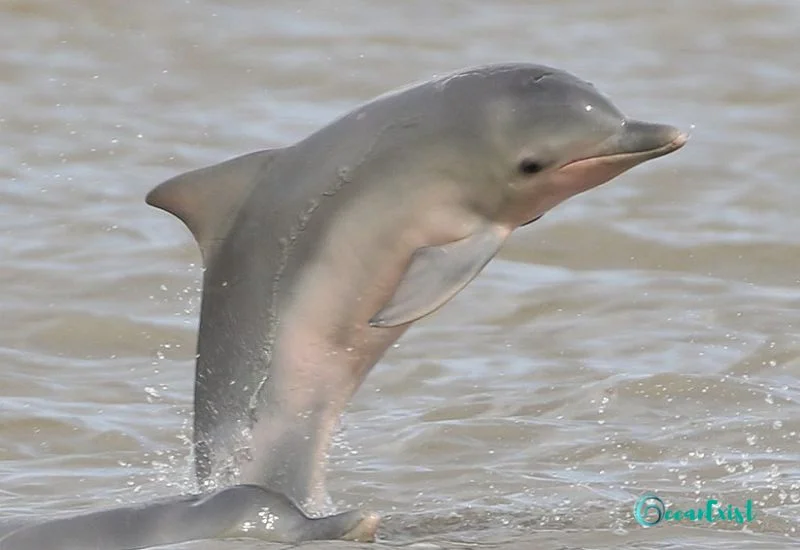
Sotalia dolphins, including the Tucuxi and Guiana dolphins, are found in the Amazon River basin and the Atlantic coast of South America. They are characterized by their small size and distinct beaks.
Scientific Name: Sotalia
Family: Delphinidae
Length: 1.5 to 2.5 meters (4.9 to 8.2 feet)
Weight: 50 to 100 kilograms (110 to 220 pounds)
Lifespan: Around 30 years
Where found: Tucuxi dolphins are found in the Amazon River basin and the Atlantic coast of South America.
Conservation: Mid-level threat
29. Platanista gangetica (Ganges River Dolphin)
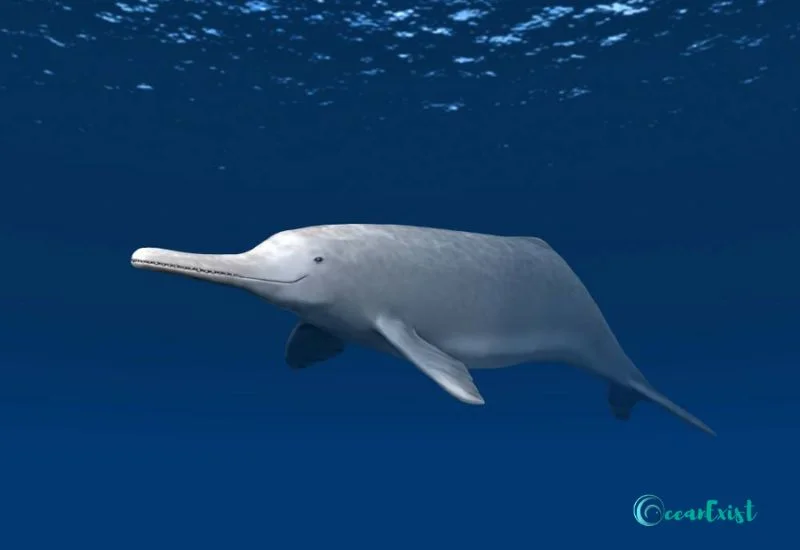
The South Asian River Dolphin, also known as the Ganges River Dolphin, is found primarily in the Ganges, Brahmaputra, Meghna, and Karnaphuli river basins in India, Bangladesh, and Nepal. It is characterized by its long, slender body and long snout.
Family: Platanistidae
Length: Typically 2 to 2.5 meters (6.6 to 8.2 feet)
Weight: 70 to 110 kilograms (150 to 240 pounds)
Lifespan: Around 20 to 30 years
Where found: South Asia, primarily in the Ganges, Brahmaputra, Meghna, and Karnaphuli river basins in India, Bangladesh, and Nepal.
Conservation: Listed as Endangered
30. Inia geoffrensis (Amazon River Dolphin or Boto)
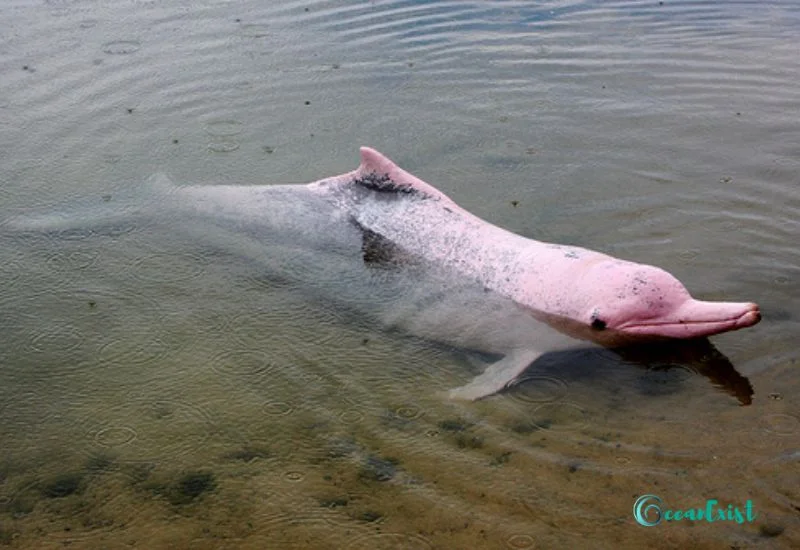
The Amazon River Dolphin, also known as the Boto, is found in freshwater river systems in the Amazon and Orinoco River basins in South America. It is characterized by its pink coloration and elongated snout.
Family: Iniidae (formerly considered a member of the Platanistidae family)
Length: 1.5 to 2.5 meters (4.9 to 8.2 feet)
Weight: 90 to 160 kilograms (200 to 350 pounds)
Lifespan: Around 20 to 30 years
Where found: Found in freshwater river systems in the Amazon and Orinoco river basins in South America.
Conservation: Mid-Level Threat
31. Orinoco River Dolphin (Amazon River Dolphin)

The Orinoco River Dolphin, also known as the Amazon River Dolphin, is found in the Orinoco and Amazon River basins in South America. It is closely related to the Amazon River Dolphin (Inia geoffrensis).
Scientific Name: Inia geoffrensis
Family: Iniidae
Length: 1.5 to 2.5 meters (4.9 to 8.2 feet)
Weight: 90 to 160 kilograms (200 to 350 pounds)
Lifespan: Around 20 to 30 years
Where found: Found in the Orinoco and Amazon river basins in South America.
Conservation: Mid-Level Threat
32. Cephalorhynchus

Cephalorhynchus is a group of dolphins. They are found along the coastlines of southern South America and New Zealand. They are characterized by their small size and distinctive coloration patterns.
Scientific Name: Cephalorhynchus
Family: Delphinidae
Length: 1.2 to 1.7 meters (3.9 to 5.6 feet)
Weight: 40 to 70 kilograms (88 to 154 pounds)
Lifespan: Around 15 to 20 years
Where found: Coastlines of southern South America and New Zealand.
Conservation: listed as Endangered or Vulnerable
33. Burrunan Dolphin
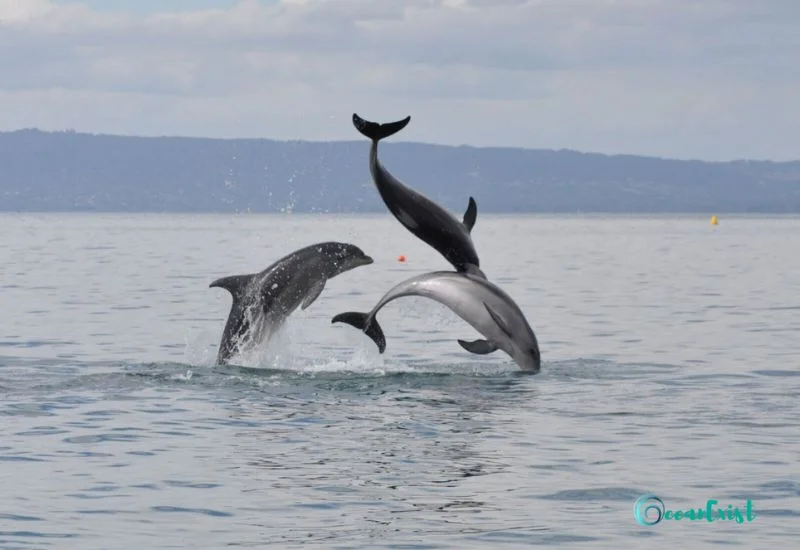
The Burrunan Dolphin is found in coastal waters of southern Australia, particularly around Victoria. It is a relatively newly described species of dolphin.
Scientific Name: Tursiops australis
Family: Delphinidae
Length: 2 to 2.7 meters (6.6 to 8.9 feet)
Weight: 100 to 160 kilograms (220 to 350 pounds)
Lifespan: Around 20 to 30 years
Where found: Coastal waters of southern Australia, particularly around Victoria.
Conservation: Listed as Endangered
34. Bolivian River Dolphin (Amazon River Dolphin)
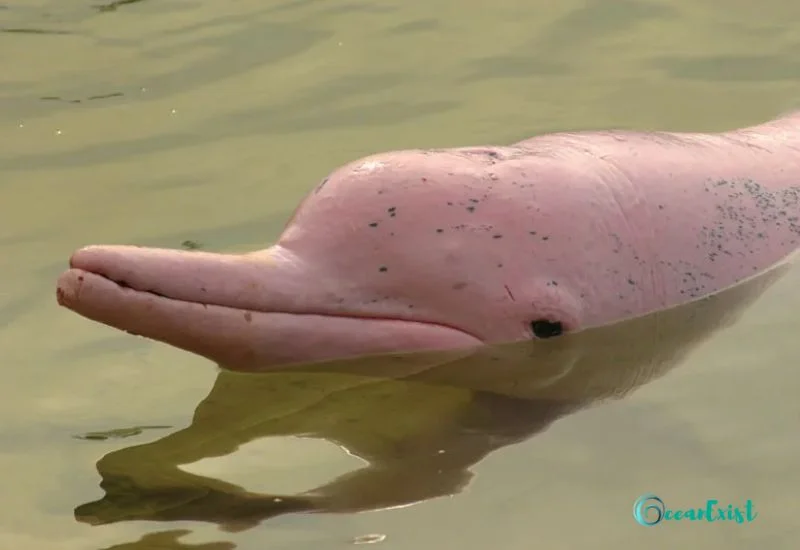
The Bolivian River Dolphin, also known as the Amazon River Dolphin, is found in the Bolivian Amazon basin. It is closely related to other river dolphins in South America.
Scientific Name: Inia boliviensis
Family: Iniidae (formerly considered a member of the Platanistidae family)
Length: 1.5 to 2.5 meters (4.9 to 8.2 feet)
Weight: 90 to 160 kilograms (200 to 350 pounds)
Lifespan: Around 20 to 30 years
Where found: Bolivian Amazon basin.
Conservation: Mid-Level Threat
35. Melon-Headed Whale

The Melon-Headed Whale, also known as the Melon-Headed Dolphin, has a distinctive rounded head and slender body. It has a dark gray-to-black coloration with lighter underparts.
These dolphins are found in deep tropical and subtropical waters and are known for their social nature, often forming large groups.
Their diet includes fish, squid, and crustaceans, which they hunt in deep waters. These grow up to 9 feet and weigh around 660 pounds. Melon-headed whales are found in deep waters of tropical and subtropical oceans.
Scientific Name: Peponocephala Electra
Family: Delphinidae
Length: 2.75 meters (9 feet)
Weight: 275 kg (660 lbs)
Lifespan: Up to 45 years
Where found: Deep waters of tropical and subtropical oceans
Conservation Status: Least Concern
36. Northern Right Whale Dolphin
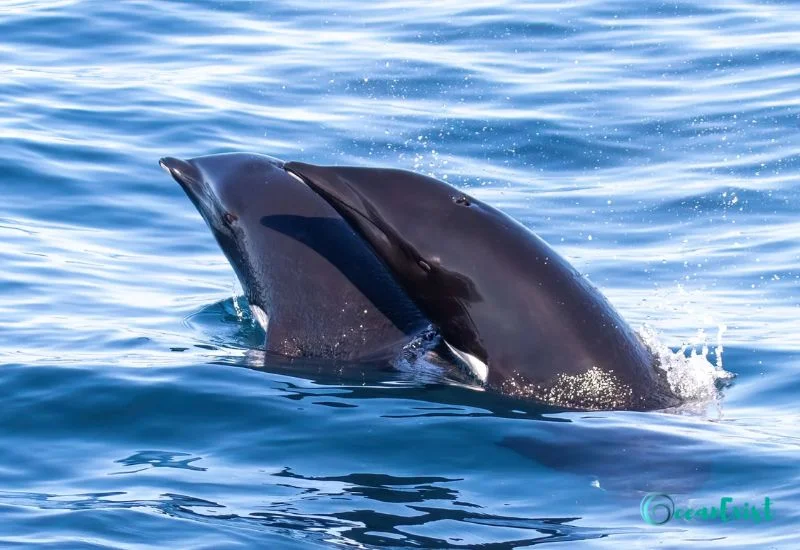
The Northern Right Whale Dolphin is unique for its lack of a dorsal fin and its sleek, black and white body. It is one of the few dolphin species without a dorsal fin.
These dolphins are found in the North Pacific Ocean and are known for their fast, acrobatic swimming. They often travel in large groups and are highly social.
Their diet primarily consists of fish and squid. This North Pacific Ocean dolphin grows up to 3 meters and weighs around 330 pounds.
Scientific Name: Lissodelphis borealis
Family: Delphinidae
Length: 2-3 meters (6.6-9.8 feet)
Weight: 60-150 kg (132-330 lbs)
Lifespan: Up to 42 years
Where found: North Pacific Ocean
Conservation Status: Least Concern
37. Pacific White-sided Dolphin
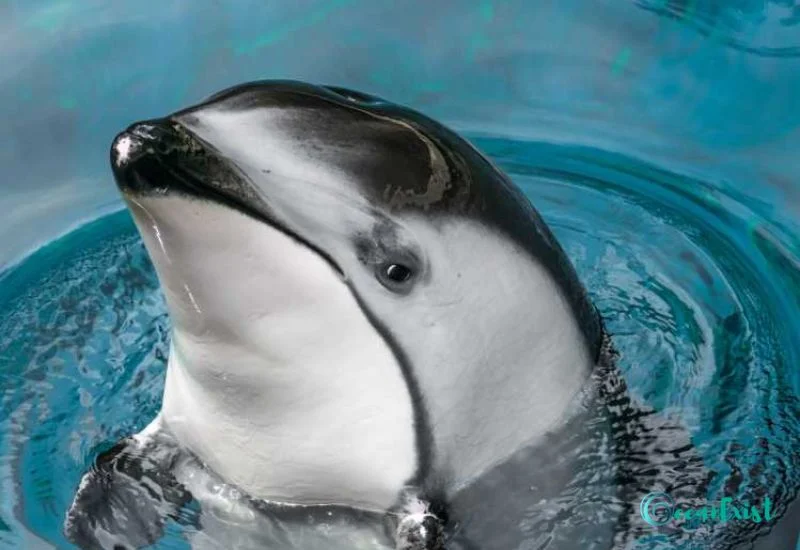
The Pacific White-Sided Dolphin is known for its striking coloration, with dark grey or black backs, white bellies, and a gray band running along its sides.
These dolphins are found in the North Pacific Ocean and are highly social, often seen in large, energetic groups. They are known for their acrobatic displays and playful nature.
Their diet consists mainly of fish and squid. These white-sided dolphins grow up to 8.2 feet, and being round and fluffy, they weigh around 397 pounds.
Scientific Name: Lagenorhynchus obliquidens
Family: Delphinidae
Length: 2.5 meters (8.2 feet)
Weight: 180 kg (397 lbs)
Lifespan: Up to 40 years
Where found: North Pacific Ocean
Conversation Status: Least Concern
38. Pantropical Spotted Dolphin

The Pantropical Spotted Dolphin is known for its distinctive spots. These spots become darker as they grow. It has a slender body with a gray coloration on the top side and a lighter underside.
These dolphins are found in tropical and subtropical oceans worldwide and are highly social, often seen in large groups. They are known for their acrobatic behavior and high-speed swimming.
Their diet primarily includes fish and squid. These normal-sized dolphins grow up to 8.2 feet and weigh 220 pounds. Their lifespan is above average, about 45 years.
Scientific Name: Stenella attenuata
Family: Delphinidae
Length: 1.7-2.5 meters (5.6-8.2 feet)
Weight: 100 kg (220 lbs)
Lifespan: Up to 45 years
Where found: Tropical and subtropical oceans worldwide
Conservation Status: Least Concern
39. Peale’s Dolphin
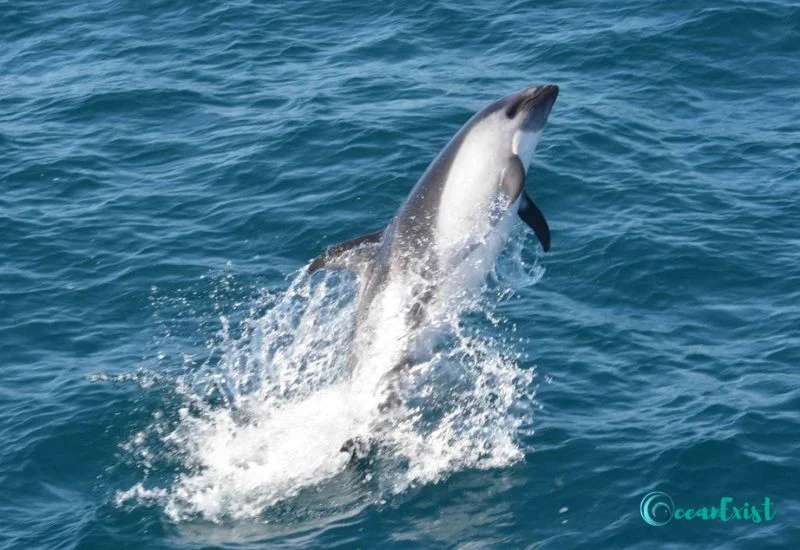
Peale’s Dolphin has a robust body with distinctive black-and-white coloration and a white band running along its sides. This type of Dolphin grows up to 2.1 meters, weighs around 254 pounds, and lives an average life of 20 years.
These dolphins are found in the coastal waters of southern South America and are known for their energetic behavior and acrobatic displays. Their diet primarily includes fish and squid.
Scientific Name: Lagenorhynchus australis
Family: Delphinidae
Length: 2.1 meters (6.9 feet)
Weight: 115 kg (254 lbs)
Lifespan: Up to 20 years
Where found: Southern South American coastal waters
40. Pygmy Killer Whale
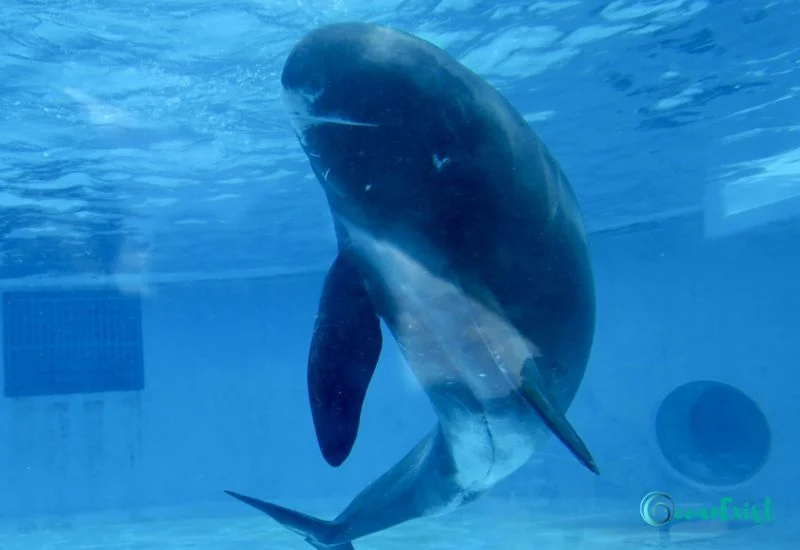
The Pygmy Killer Whale is known for its robust body and dark coloration, resembling a miniature version of the killer whale.
It has a rounded head and a less prominent beak. These dolphins are found in tropical and subtropical oceans and are known for their elusive nature.
This type of Dolphin grows up to 2.6 meters, weighs around 490 pounds, and lives an average life of 30 years. Their diet consists mainly of fish and cephalopods.
Scientific Name: Feresa attenuata
Family: Delphinidae
Length: 2.6 meters (8.5 feet)
Weight: 225 kg (496 lbs)
Lifespan: Up to 30 years
Where found: Deep tropical and subtropical waters
41. Risso’s Dolphin
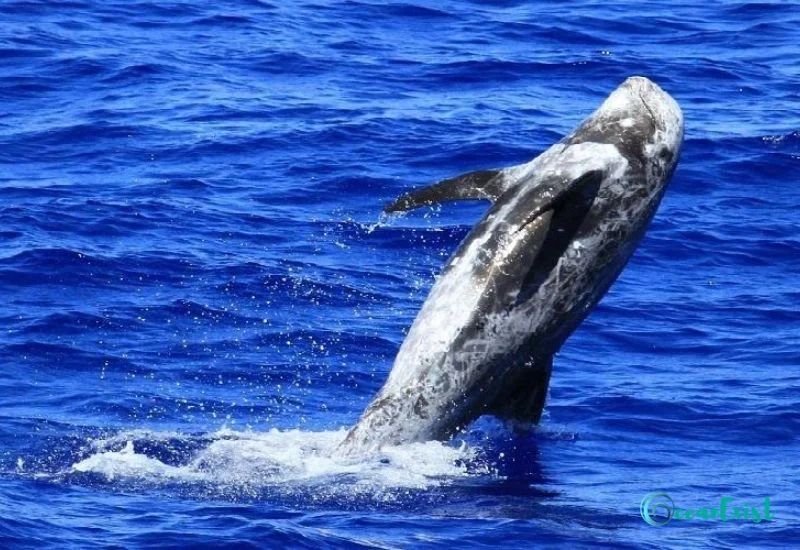
Risso’s Dolphin is easily identified by its bulbous head and numerous scars and scratches on its body. It has a gray coloration that lightens with age.
This type of Dolphin grows up to 4 meters and weighs around 500 pounds, and lives an average life of 35 years.
These dolphins are found in temperate and tropical oceans and are known for their social behavior. Their diet primarily includes squid and other cephalopods.
Scientific Name: Grampus griseus
Family: Delphinidae
Length: 3-4 meters (9.8-13 feet)
Weight: 300-500 kg (661-1,102 lbs)
Lifespan: Up to 35 years
Where found: Temperate and tropical oceans worldwide
42. Rough-Toothed Dolphin
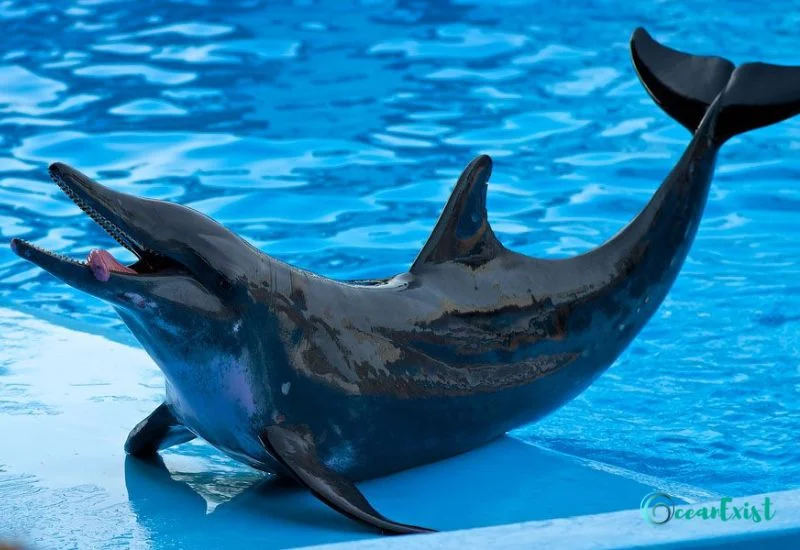
The Rough-Toothed Dolphin is known for its unique conical teeth and streamlined body. It has a gray coloration with a lighter underside and a pinkish hue around the mouth.
These dolphins are found in deep tropical and subtropical waters and are known for their social behavior. This type of Dolphin grows up to 2.65 meters, weighs around 342 pounds, and lives an average life of 36 years. Their diet consists mainly of fish and squid.
Scientific Name: Steno bredanensis
Family: Delphinidae
Length: 2.65 meters (8.7 feet)
Weight: 155 kg (342 lbs)
Lifespan: Up to 36 years
Where found: Deep, warm, and tropical waters
43. Short-Finned Pilot Whale
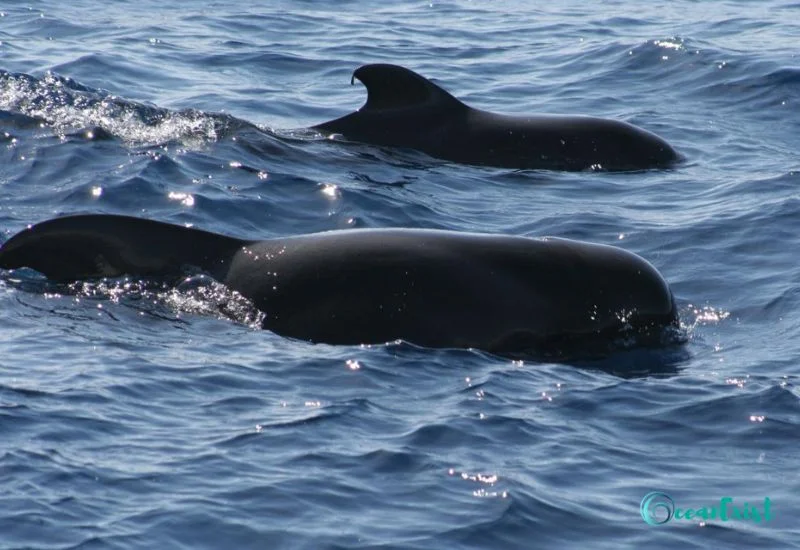
The Short-Finned Pilot Whale is known for its large size and bulbous forehead. These whales are found in tropical and subtropical oceans and are highly social, often seen in large pods.
Their diet primarily includes squid and fish. This type of Dolphin grows up to 5.5 meters, weighs around 3000 pounds, and lives an average life of 45 years.
Scientific Name: Globicephala macrorhynchus
Family: Delphinidae
Length: 5.5 meters (18 feet)
Weight: 1,000-3,000 kg (2,205-6,614 lbs)
Lifespan: Up to 45 years
Where found: Tropical and subtropical oceans
44. Southern Right Whale Dolphin
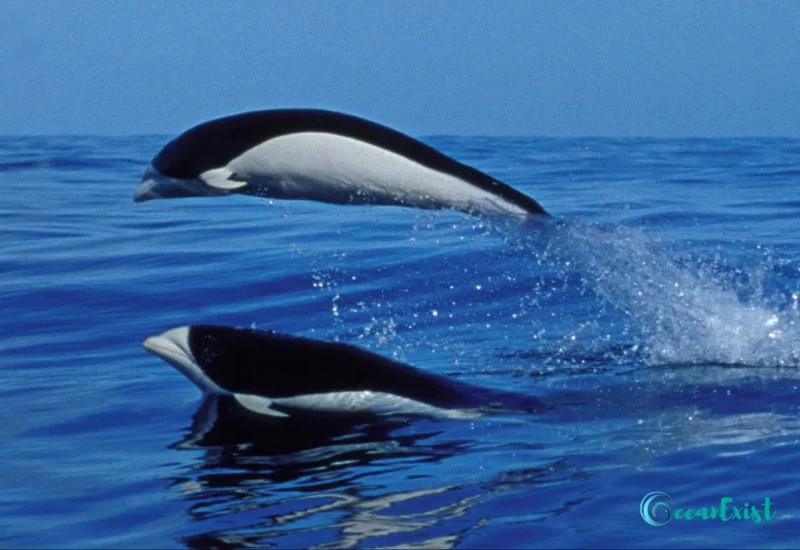
The Southern Right Whale Dolphin is known for its lack of a dorsal fin and its sleek, black-and-white coloration.
These dolphins are found in the oceans of the Southern Hemisphere and are known for their graceful swimming and acrobatic behavior.
This type of Dolphin grows up to 2.3 meters, weighs around 100 pounds, and lives an average life of 42 years. Their diet consists mainly of fish and squid.
Scientific Name: Lissodelphis peronii
Family: Delphinidae
Length: 2.3 meters (7.5 feet)
Weight: 60-100 kg (132-220 lbs)
Lifespan: Up to 42 years
Where found: Southern Hemisphere oceans
45. Spinner Dolphin

The Spinner Dolphin is named for its remarkable spinning behavior when it leaps out of the water. This type of Dolphin grows up to 2.4 meters, weighs around 80 pounds, and lives an average life of 25 years.
It has a slender body with a long, thin beak and a tri-color pattern of dark gray, light gray, and white.
These dolphins are found in tropical and subtropical oceans worldwide and are highly social, often seen in large groups. Their diet includes fish and squid.
Scientific Name: Stenella longirostris
Family: Delphinidae
Length: 1.9-2.4 meters (6.2-7.9 feet)
Weight: 60-80 kg (132-176 lbs)
Lifespan: Up to 25 years
Where found: Tropical and subtropical oceans worldwide
46. Striped Dolphin
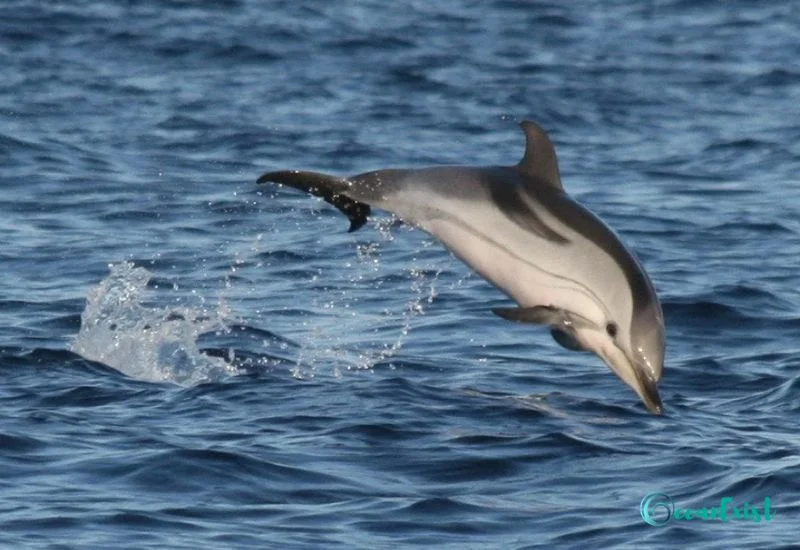
The Striped Dolphin is easily recognized by the blue and white stripes running along its sides. It has a streamlined body and is known for its high-speed swimming and acrobatic leaps.
This type of Dolphin grows up to 2.6 meters and weighs around 353 pounds, and lives an average life of 55 years.
These dolphins are found in temperate and tropical oceans worldwide and are highly social, often seen in large groups. Their diet consists mainly of fish and squid.
Scientific Name: Stenella coeruleoalba
Family: Delphinidae
Length: 2.4-2.6 meters (7.9-8.5 feet)
Weight: 150-160 kg (330-353 lbs)
Lifespan: Up to 55 years
Where found: Temperate and tropical oceans worldwide
47. Tucuxi
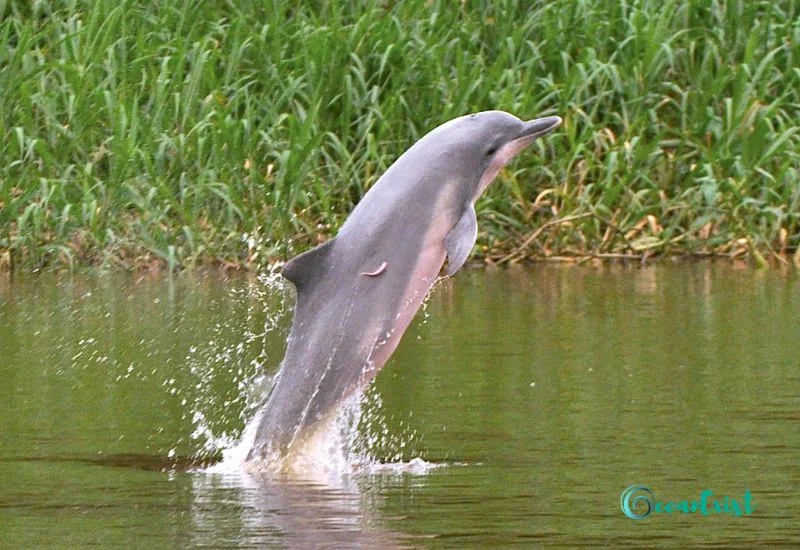
The Tucuxi is a small dolphin found in freshwater rivers and coastal waters of South America. It has a sleek, gray body with a lighter underside and a distinct beak.
This type of Dolphin grows up to 1.8 meters and weighs around 121 pounds, and lives an average life of 35 years. These dolphins are social and often seen in small groups. Their diet includes fish and crustaceans.
Scientific Name: Sotalia fluviatilis
Family: Delphinidae
Length: 1.5-1.8 meters (4.9-5.9 feet)
Weight: 35-55 kg (77-121 lbs)
Lifespan: Up to 35 years
Where found: Freshwater rivers and coastal waters of South America
48. White-Beaked Dolphin

The White-Beaked Dolphin is known for its robust body, white beak, and black-and-white coloration.
These dolphins are found in the North Atlantic Ocean and are highly social, often seen in large groups.
This type of Dolphin grows up to 3.1 meters, weighs around 770 pounds, and lives an average life of 40 years. They are known for their acrobatic behavior and playful nature. Their diet includes fish, squid, and crustaceans.
Scientific Name: Lagenorhynchus albirostris
Family: Delphinidae
Length: 2.4-3.1 meters (7.9-10.2 feet)
Weight: 180-350 kg (397-772 lbs)
Lifespan: Up to 40 years
Where found: North Atlantic Ocean
49. River Dolphins
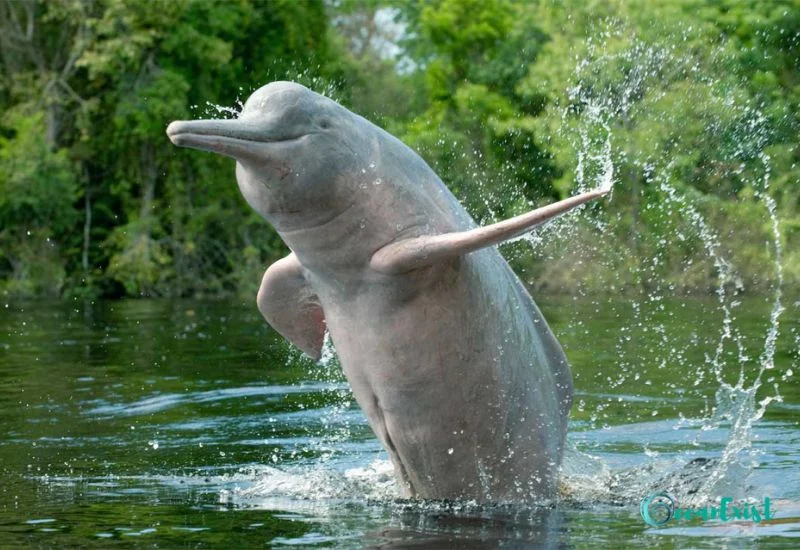
River Dolphins are a diverse group of dolphins found in freshwater rivers and estuaries in South America and Asia.
They have elongated bodies and distinct beaks, with varying sizes and colorations depending on the species. Their diet primarily includes fish and crustaceans.
This type of Dolphin grows up to 2.5 meters and weighs around 440 pounds, and lives an average life of 40 years.
Scientific Name: Inia geoffrensis, Platanista gangetica, Pontoporia blainvillei, Lipotes vexillifer
Family: Inidae, Platanistidae, Pontoporiidae, Lipotidae
Length: 1.5-2.5 meters (4.9-8.2 feet)
Weight: 50-200 kg (110-440 lbs)
Lifespan: 20-40 years
Where found: Freshwater rivers and estuaries in South America, Asia
Conclusion
Dolphins are the most recognizable and loved ocean species. Different types of dolphins are characterized by nose types, behavior, patterns, size, and the area in which they are found. Dolphins live in oceans, and a few species are found in rivers.
Dolphins’ average lifespan is between 15 years to 25 years. Usually, their color is dark gray on the upper side and white or yellow on the bellies.
Dolphins are carnivores and eat squids, small fish, bigger fish, live animals, and turtles. However, on some occasions, dolphin species eat plants, too.
Few dolphin species are in danger, whether for commercial or natural purposes. To save these friendly species, everyone must raise their voice against harmful practices to let dolphins live.
That was all from my side. I tried to explain all of the dolphin species at my best.
Feel free to comment if you have anything to add or suggest.
If you are really into dolphin fish, you can learn about ten interesting facts about dolphins in our other blog.